3 Fly Fishing Situations When I Will Stop My Streamer During the Retrieve
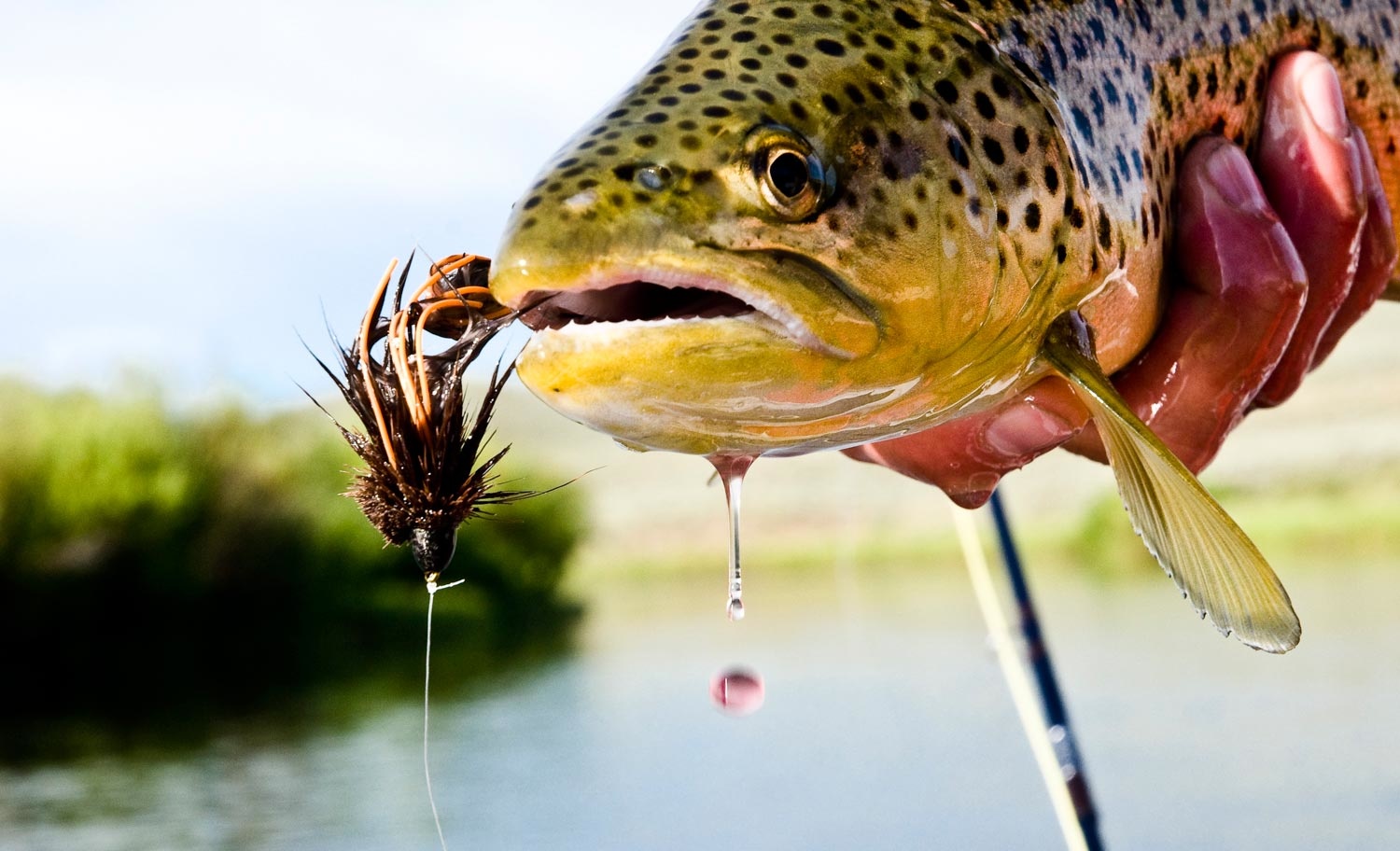
Warning: The fly fishing advice you’re about to read may go against your present beliefs. There’s a good chance you’ll feel inclined to tell me I’m nuts for recommending it. That’s totally cool, I just ask that you read what I’ve written, before you make the decision to set me straight.
IT HAS LONG BEEN DRILLED INTO OUR HEADS, THAT THE WORST THING A FLY FISHERMAN CAN DO WHEN A FISH IS TRACKING HIS/HER STREAMER, IS STOP THE RETRIEVE.
I agree with this advice 95% of the time because most prey when threatened by a predator, will swim as hard and fast as possible to escape being eaten. That being said, I’ve been on the water many times when the constant-strip retrieve, or even the speed-up retrieve with my streamer, has failed to get me the hook up from a following fish. It was only when I thought outside the box, and found the courage to go against the popular view that streamers should always be kept moving when a fish is tracking, that I found myself with a bent rod.
With most things in fly fishing, there’s always exceptions to the rule. No matter how rare the exception may come up, a fly fisherman should always be willing to experiment when traditional tactics aren’t producing. If I told you that you were going to be streamer fishing a river where there were lots of injured and dying baitfish, would you still believe that a constant retrieve with a streamer would be your best tactic? What about if you were fly fishing trout water that had huge populations of sculpins or I said you were going to be fly fishing on a lake for largemouth bass, with water temperatures in the high forties? These are just a few fly fishing situations when I’ve found that a stop-and-go retrieve with a streamer can produce better than a constant retrieve, when fish are tracking but not eating. Below are three situations when killing your streamer retrieve, could prove to be your golden ticket.
Read More »Public Lands Photo Essay

You don’t know what you’ve got ’til it’s gone.
Unless you’ve been living in a cave this last year, you know that there is a real and present danger facing our American public lands. A group of short sighted law makers would like to sell of your American birthright, or deed it over to states to sell if for them.
I’ve been fortunate to see several dozen countries in my life, and to fish many of them. I can tell you this with complete certainty. Our public lands are unique and precious. They are what, for sportsmen and women at least, set us apart from much of the rest of the world. I say this, not boastfully, but with great fear. We are on the verge of losing the very thing that makes the country great.
I could write a couple of thousand words about this issue, but I have chosen instead to show you exactly whats at risk. Here are a few photos I’ve taken while fishing some of our great public lands. You will recognize many of these places. Although all of our public lands are not so famous, they are equally precious. I encourage you to remember this when choosing the representatives who speak for you.
Please consider signing the Sportsmen’s Access Petition. For each person who does a message is sent to their representatives in congress. Make your voice heard.
If you’re interested, heres Adventure journal’s list of the 20 lawmakers hell-bent on selling your public lands. One of them may represent you…or not.
ENJOY THE PHOTOS. LETS ALL DO WHAT WE CAN TO INSURE THAT PHOTOS ARE NOT ALL WE ARE LEFT WITH.
Read More »Better Fly Rod Grip For Better Casting: Video
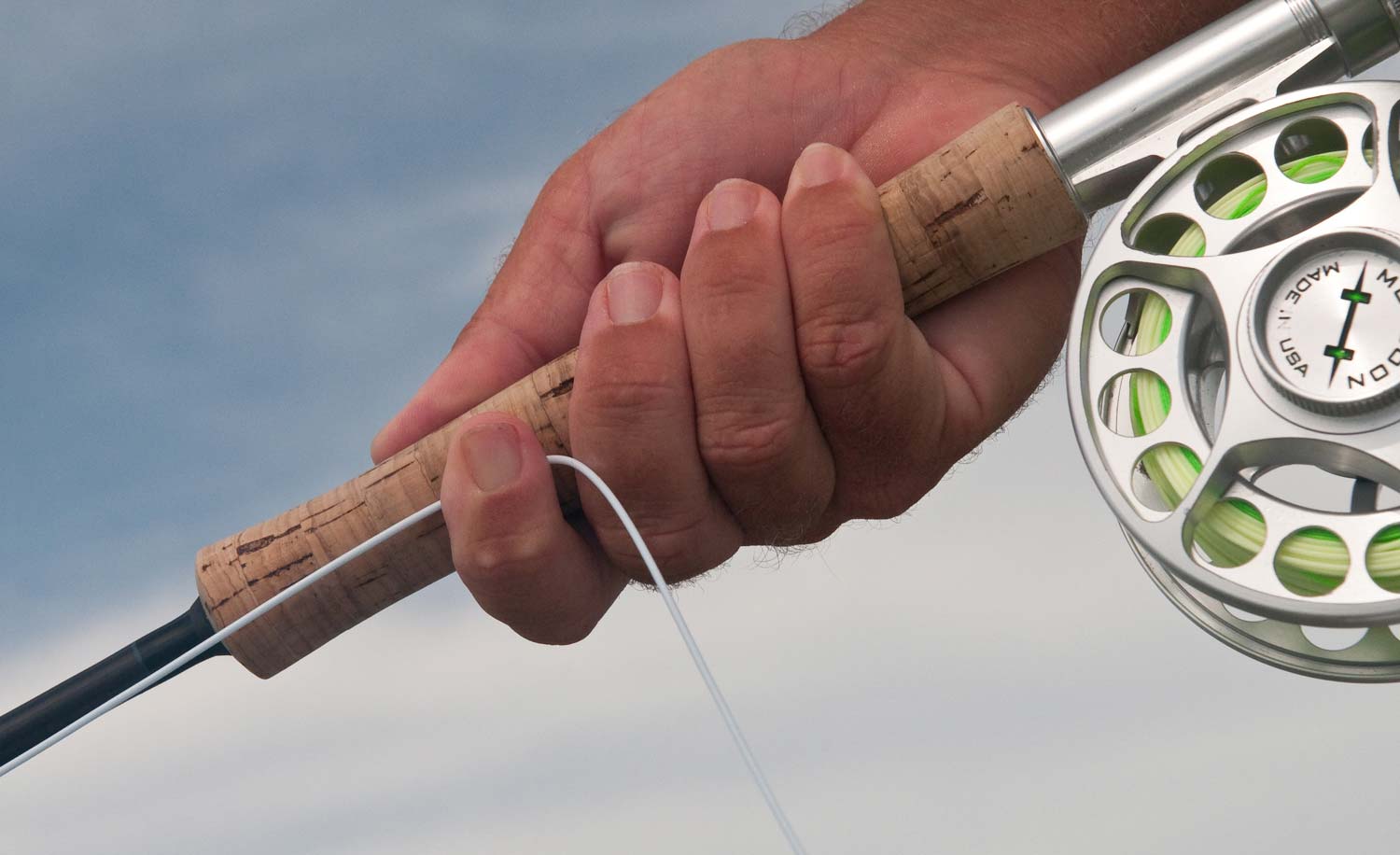
The grip is the most fundamental part of your fly cast.
When I’m helping someone with their casting, their grip is always the first thing I look at. The grip is so basic that many anglers never take time to learn it. A bad grip has effects that ripple out through your casting. Even if you have a good grip, you may be using it wrong. It’s more common than you’d think. In fact, I struggled with it myself for years.
Don’t let your grip slow you down. Take some time to learn the best way to hold the rod and work on it when you practice your casting. It will pay you back in more fish.
WATCH THIS VIDEO TO LEARN THE BEST WAY TO GRIP A FLY ROD.
Read More »Learn How To Row, Row, Row A Drift Boat!
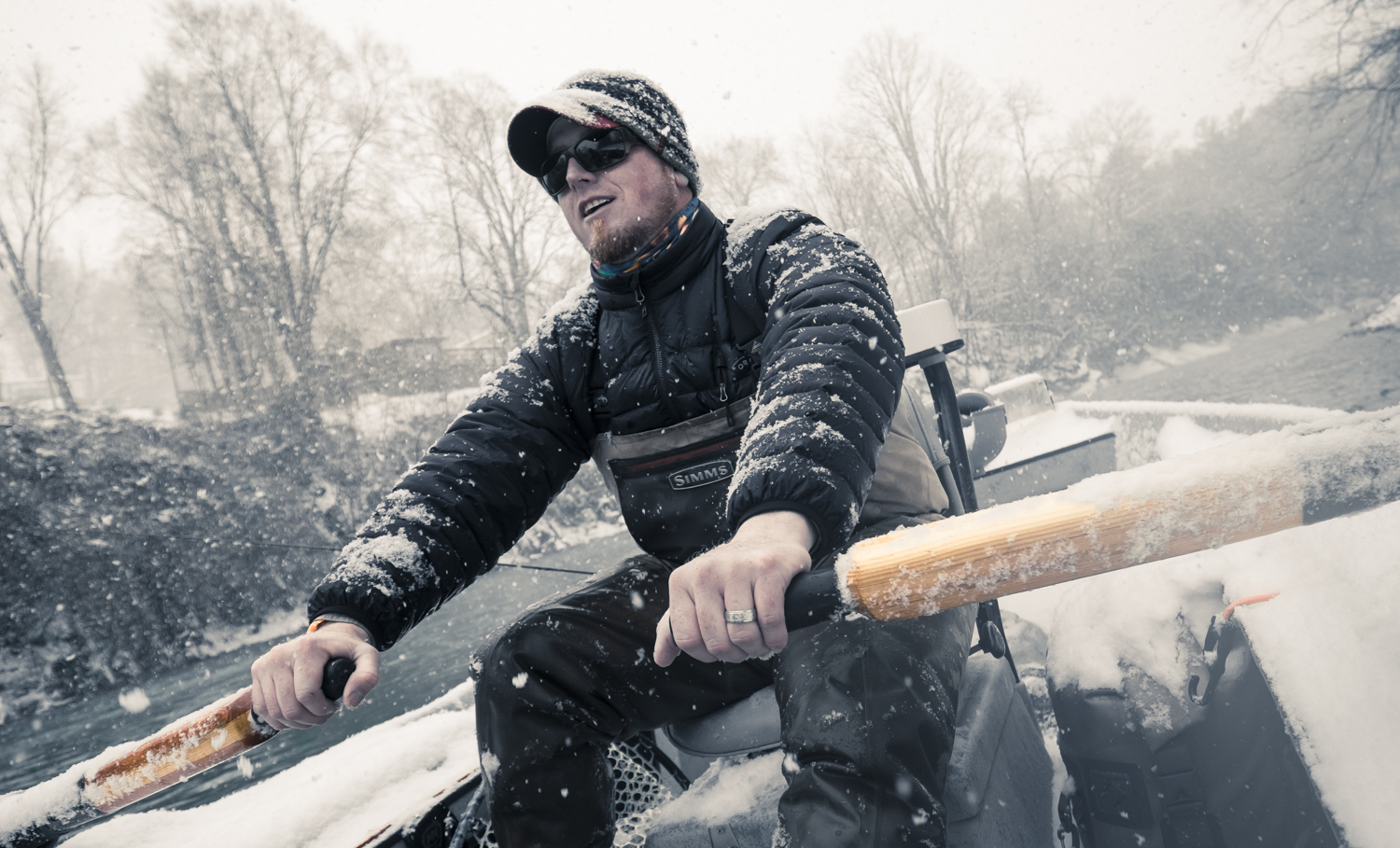
I have to say, I’m a little embarrassed to admit that I have zero experience behind the sticks of a drift boat.
NOPE. ZERO. NADA. NONE.
It’s been nineteen years since I picked up my first fly rod and laid out an ugly cast across Fightingtown Creek, and in nearly two decades I’ve never learned how to row a drift boat. It almost seems sacrilegious to think about it. I’ve been in my fair share of drift boats and rafts along the way, but mainly as a guest or client, so it’s never really been expected of me to take my turn on the oars. I’ve also never owned my own boat or raft so learning to row has never been a necessity. Put my ass in a john boat on a farm pond and I’m good to go, but I’d fare better dropped off in Germany looking for a pair of left-handed chopsticks than rowing a boat down a western river! And we haven’t even thrown fishermen in the boat yet!
On our recent venture to the South Holston River, Louis and Chase Pritchett of American Made Flies were determined to take on the undeniable liability of teaching me how to row down a damn river in the G&G Adipose Flow.
On the second day, during some of the prettiest snow I’ve seen in a long time, we stopped to release a feisty brown trout near the bank. The plan was to fish a particular section of the bank and once we were done, then it would be my turn to get on the oars. A little catch, photo, and release and it was time to shuffle around the Flow so that I could take my place in the middle seat. As intimidating as it was being on a boat that A) isn’t mine and B) with two other anglers and friends that know what they are doing when it comes to drift boats, it was only a few minutes into my maiden voyage that I began to feel how the boat responded to different strokes with the oars, and different currents. Yes, there were some trials and tribulations. Mistakes were made, but It was a great experience. I had two great friends that were patient, and gave me several tips and constructive feedback on how to correct my mistakes. It was a truly awesome day. I was by no means what you would call “proficient” with those oars when my time was done, but I sure do feel more confident in stepping up and getting on the sticks next time around. It’s just one of those things you have to just go and do, and learn from experience. I honestly didn’t put a bend in my rod that day. Those browns weren’t diggin’ what I was throwing down that day, but it didn’t even matter. I could have rowed that boat all day. It was one of those days on the water I’ll never forget.
THINKING ABOUT LEARNING HOW TO ROW A DRIFT BOAT? HERE ARE A FEW TIPS THAT I TOOK FROM MY FIRST EXPERIENCE LAST WEEK THAT MIGHT HELP YOU ON YOUR FIRST DRIFT WITH OARS IN HAND.
Don’t Crash The Boat – This one is important and Numero Uno and pretty obvious! Chances are you will
Read More »Stocking Nymph Patterns in Different Weights
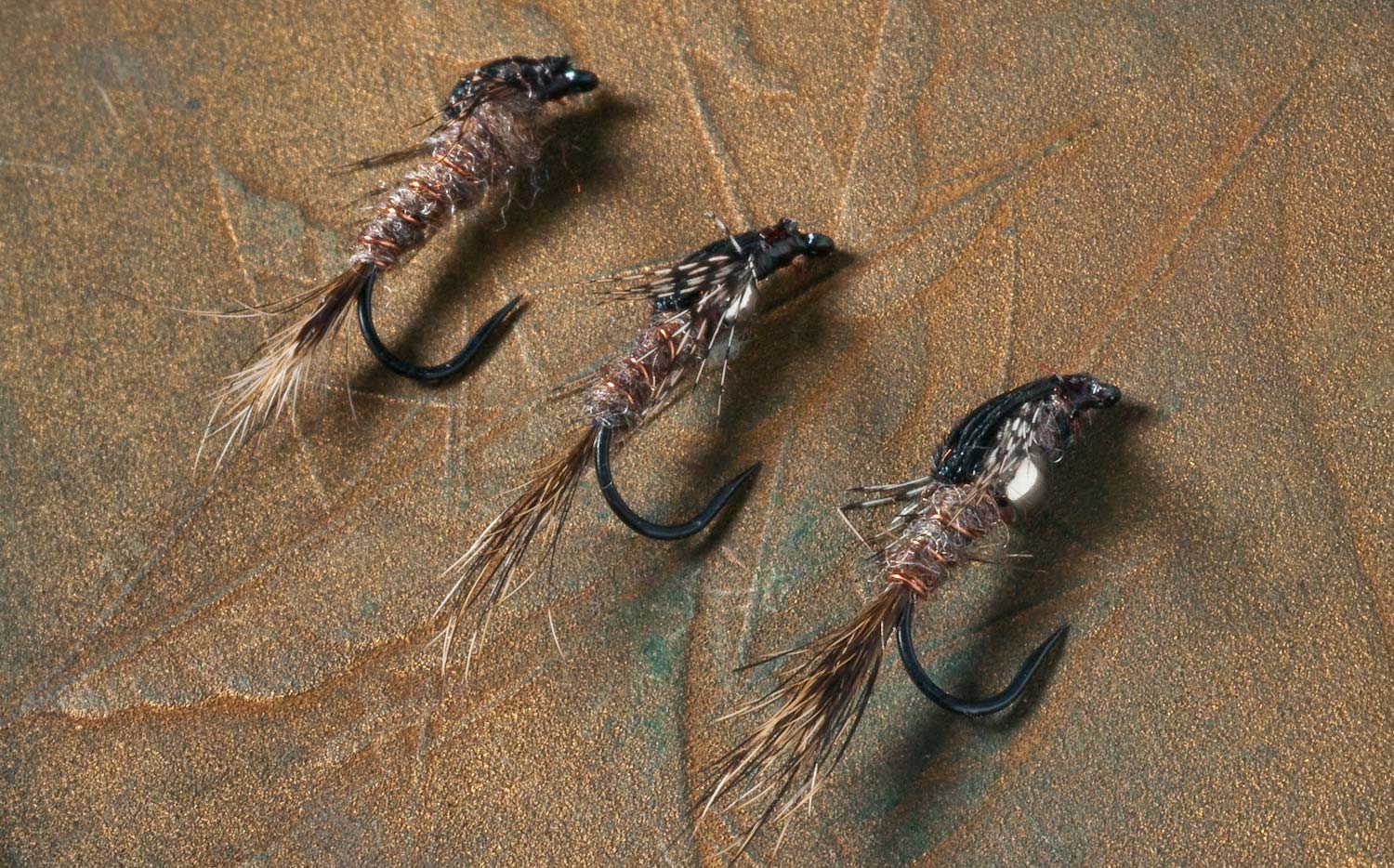
THIS PAST WEEKEND, ON ONE OF MY HOME TROUT WATERS, I WAS FRESHLY REMINDED HOW IMPORTANT IT CAN BE TO CARRY DIFFERENT WEIGHTED VERSIONS OF MY FAVORITE NYMPH PATTERNS DURING TOUGH FISHING CONDITIONS.
The low and gin clear water had the trout extra spooky and cautious. All it took was one wrong move, like my shadow briefly being cast over the water, or a presentation made a little too hard, and the trout ran for their lives like they were being chased by a pack of starving otters.
I use split-shot most of the time with my nymph rigs to get my flies down in the strike zone. It works great for me almost all of the time, but keep in mind that the extra weight added by them, also increases the noise made when presenting your flies on the water. Since I had low and flat water conditions, it wasn’t necessary for me to use them to get my flies down for most of the water anyways, except for the deeper pools. I love my Thingamabobbers but I had to substitute them for small stick-on foam strike indicators to keep my presentations extra quiet. I could have used a dry fly as an indicator but it would have called for me to constantly adjust my dropper length to keep my flies drifting in the preferred depths from one fishing spot to the next.
For the most part, the trout were congregated in the deeper pools, buckets and troughs, where the most water was found, but there were also multiple spots where I found trout holding in shallow, slow moving water located near cover. These places required unweighted or lightly weighted versions of my nymph patterns to get a good drift through the target water. My problem, was that the trout were favoring hares ears and I was slap out of unweighted versions of them. My weighted versions worked fine in the deeper water, but they didn’t work so well in the shallow water. I managed to catch a few fish on soft-hackles and pheasant-tails in the shallow water, but I had to really be precise with my presentations to get them to eat. If I would have had more unweighted/lightly weighted hares ears on hand, I’m confident I could have landed more fish in the areas where the trout were holding in shallow water.
For some reason, the trout were willing to move much further to eat a hares ear than my other nymph patterns. I’ve learned over the years, that every fishing day is different and unique. Some days the trout will be opportunistic and will eat a wide selection of fly patterns, while other days, even on water that is so called “infertile”, where there’s low bug densities, trout may choose to go against their opportunistic feeding habits and flat out prefer one food source or fly pattern over the rest. It doesn’t make a lot of since, and it goes against what most fly fishing authors teach, but then again, you alway have to add fishing pressure into the equation. I think this was
Read More »Don’t Get Stuck in a Fly Fishing Rut
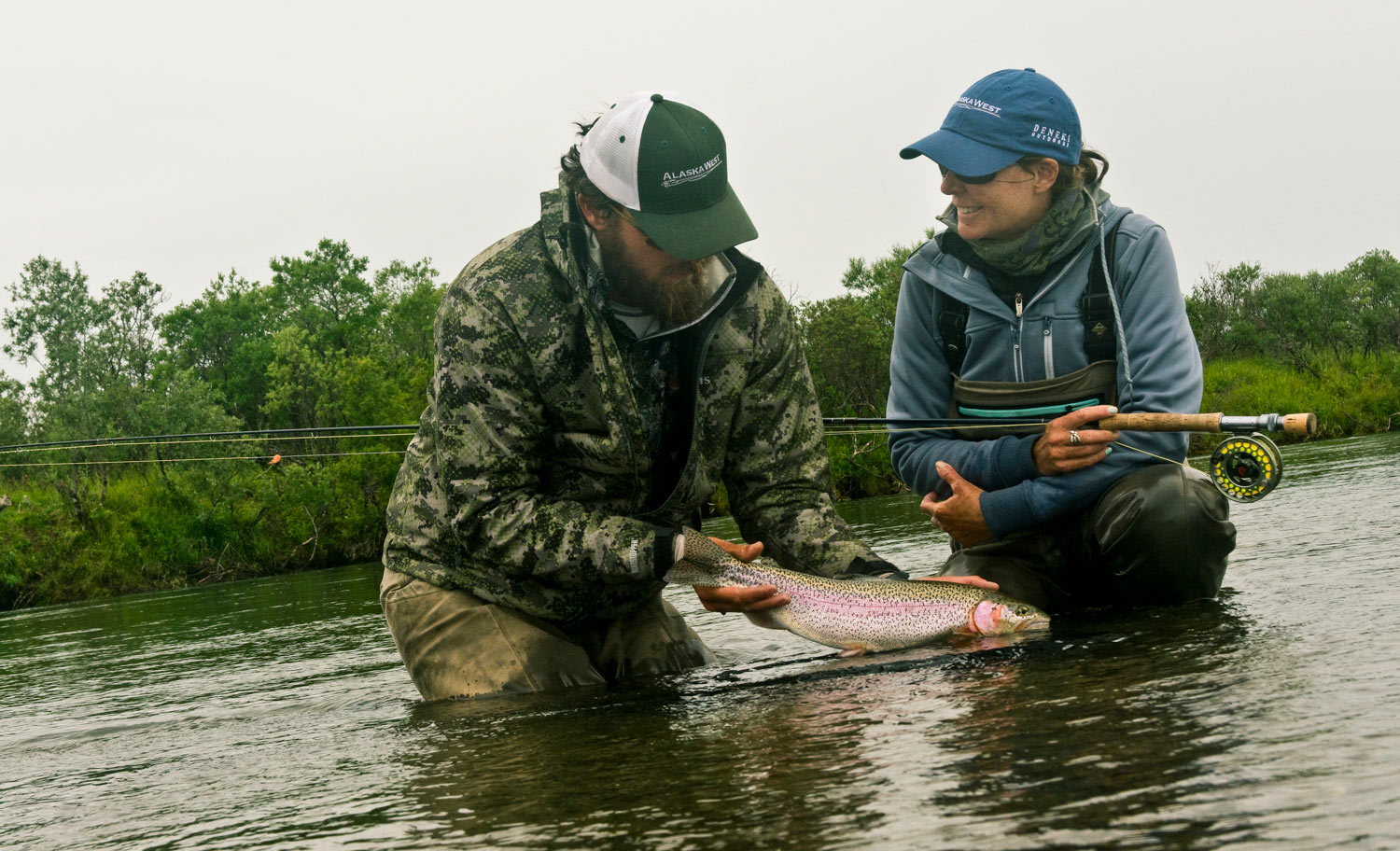
I see this simple mistake keep anglers from catching fish with startling regularity.
I was invited on a float trip recently and witnessed a remarkably common pattern, which may have greatly limited the number of fish brought to the boat. My fishing partner and I were told to arrive empty handed. That’s an unusual request for a day of fishing, but we were being hosted by a manufacturer who wanted us to test new products, so we complied. Well, almost. I’ve seen too many tough days on a drift boat to come aboard without an ace in the hole. I grabbed a pill bottle and dropped four trusted streamers inside. As long as I had a rod and line, I could make a day out of that.
When it came time to fish we were graced with beautiful weather, apparently for the first time in over a week and our guide was stoked. He had been eagerly awaiting the golden stone hatch and was confident that today was the day. He outfitted both rods with big dry flies and we pounded the bank. It seemed like a winning plan but after an hour and a half of drifting some very tasty water we were still fishless.
I clipped off my fly and tippet and tied on a streamer.
I didn’t get any attention at first but after a pattern change
Read More »Yellowhammers and Specks
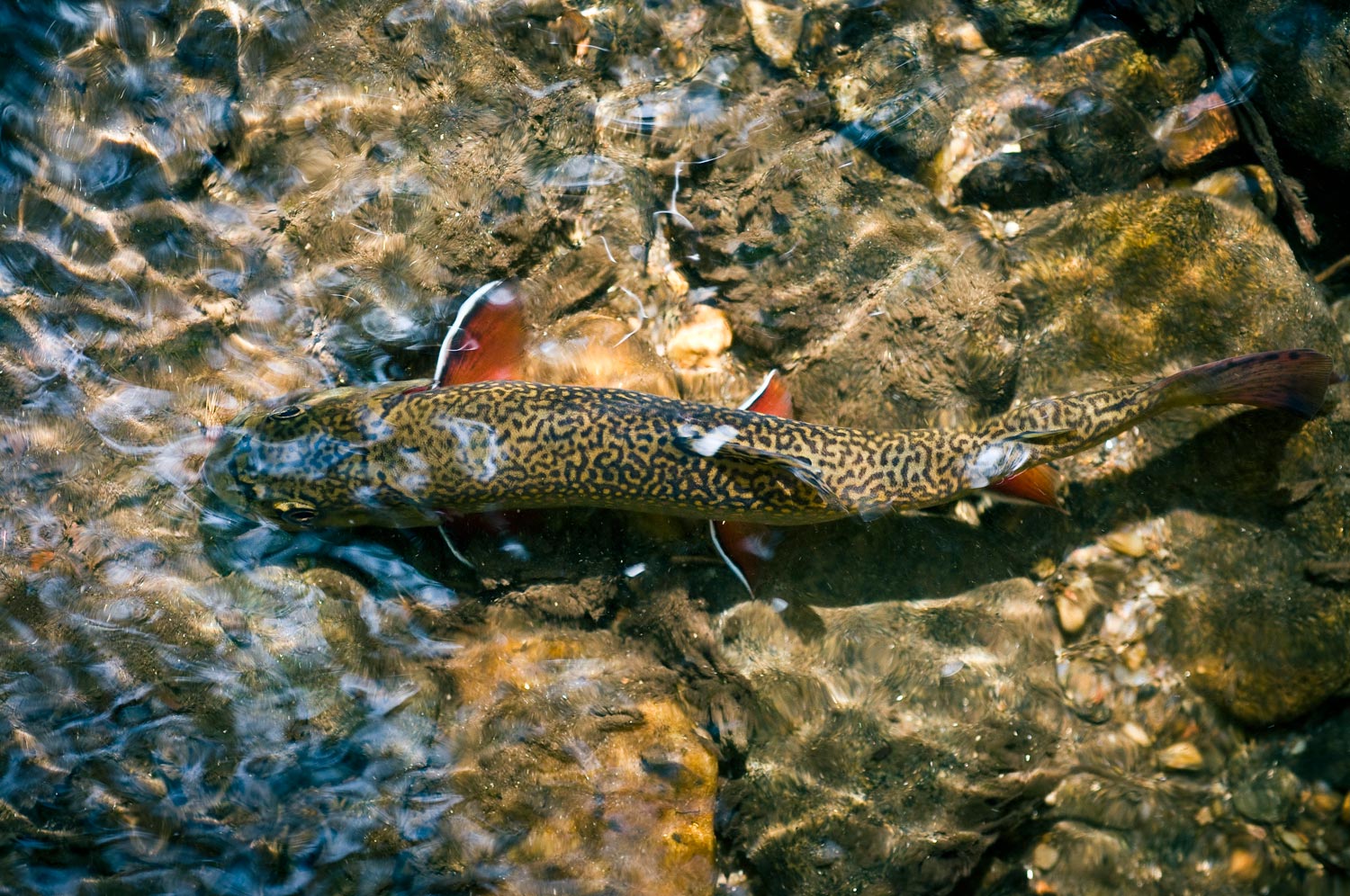
“I thought you might like these,” my brother Tom holds out an old yellowed envelope. “I found them going through some of Pete’s things.”
William Starling Cahill, who preferred to be called Pete, was my Grandfather and the man who taught me to fly fish. He’s been gone for many years now but from time to time little gems that he left behind will turn up. My brother now lives in Pete’s old house which puts him in a good position to uncover relics.
I open the envelope and into my hand spill two feathers, dark down one edge and bright yellow along the other. “Ooooohh,” I exclaim and catch Tom’s eye, “Unobtainium.”
Yellowhammer is what we call them here in the south. The Yellow Shafted Flicker, a delicate little woodpecker who’s hammering used to echo off the hills of the Southern Appalachians. He’s almost completely silent now, shotgunned to the brink of extinction. Just having those two little feathers now could land me in jail. The Yellowhammer is heavily protected, now that it’s pretty much too late.
Yellowhammer is what we call the fly too. The one that’s tied from those feathers. It’s a wild, buggy looking thing. You wouldn’t expect a trout to eat it, but they do, like there’s no tomorrow. It’s a pattern as old as the little abandoned country church I pass on the gravel mountain road that leads to the stream I don’t tell anyone about. It’s as old as the graves there in the church yard and just as forgotten, but I still fish it.
It’s the perfect fly to catch Southern Appalachian Brook Trout. The Brookie, or Speck as they used to call them, is our only native trout. Forced south from New England by the ice age long before there was an England, new or old. When the ice retreated, like lots of folks who visit the south, the brookies stayed. They evolved, adapted to their new home and, like the Scotts and Irishmen who came to these mountains, they ended up just a little different from their northern cousins.
They are as scarce as the yellowhammer now, but with none
Read More »Flats Boat Etiquette, Being A Good Fishing Partner

The reception to my last fly fishing etiquette post was so positive I thought I’d dive in a little deeper.
Flats fishing from a boat is a team sport. Whether you’re out fishing with friends, out with a guide or on a trip to a fishing lodge, you’re never out on the boat by yourself. Usually you are sharing your fishing time with another angler. It may be a friend, a spouse or a complete stranger but regardless of who you’re fishing with, one thing is the same. How you behave on the boat affects their fishing experience.
I’ve seem some pretty thoughtless things done on flats skiffs. Usually out of ignorance and often ending in embarrassment. Neither angler, or the guide for that matter, needs that. With that in mind, here are a few simple rules to help you be a good boat buddy.
BE QUIET!
Rule number one. First, last and always, be quiet. Saltwater fish are easily spooked and the noise of cooler lids, camera cases and beer bottles banging against the hull travel for great distances in the water. Don’t be a busy bee. Your buddy’s fishing time is not your chance to get a few things done around the boat. Be still. Rocking the boat moves water and fish can hear it. Keep your shoes off. Sock feet are quiet feet. Be obsessively quiet. You never know when you’re about to see the fish of a lifetime.
DON’T BE A BOW HOG
Share the fishing time fairly. It’s not fair to stay on the bow all day, even if you’re not seeing fish. The worst is when two anglers of very different skill levels get paired together. All too often the better angler spends the day watching his partner blow shot after shot. When it’s his turn to fish, he gets up, catches his fish in five minutes and is back in the chair for an hour.
There are some “rules” for lack of a better term. They vary a little and guys who fish together often sometimes have their own rules but they are all something like this.
Read More »Douse The Flash
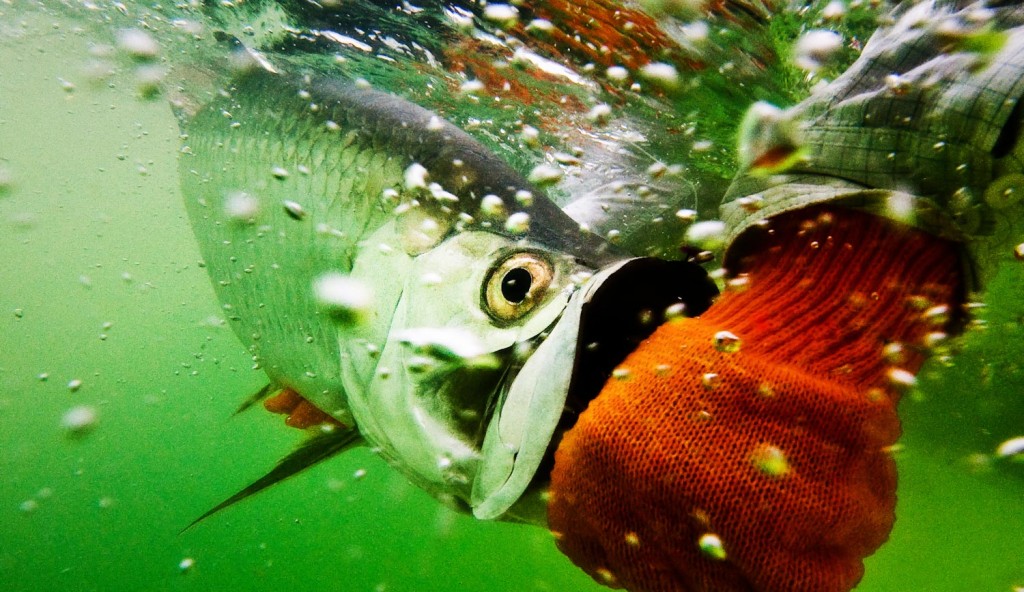
All waterproof point and shoot cameras have a built-in flash, but is it your friend?
Well, sometimes. I’m a big believer in fill flash and use it a lot myself but when the camera drops below the surface of the water it can be a liability. When pros use flash under water the they take the flash off to the side, well off the lens axis, and trigger it remotely. It’s a great technique and works well but it’s impossible to pull off with a point and shoot.
Here’s the problem with having your flash on the camera.
It’s remarkable how much
Read More »Demystifying The Hex Hatch
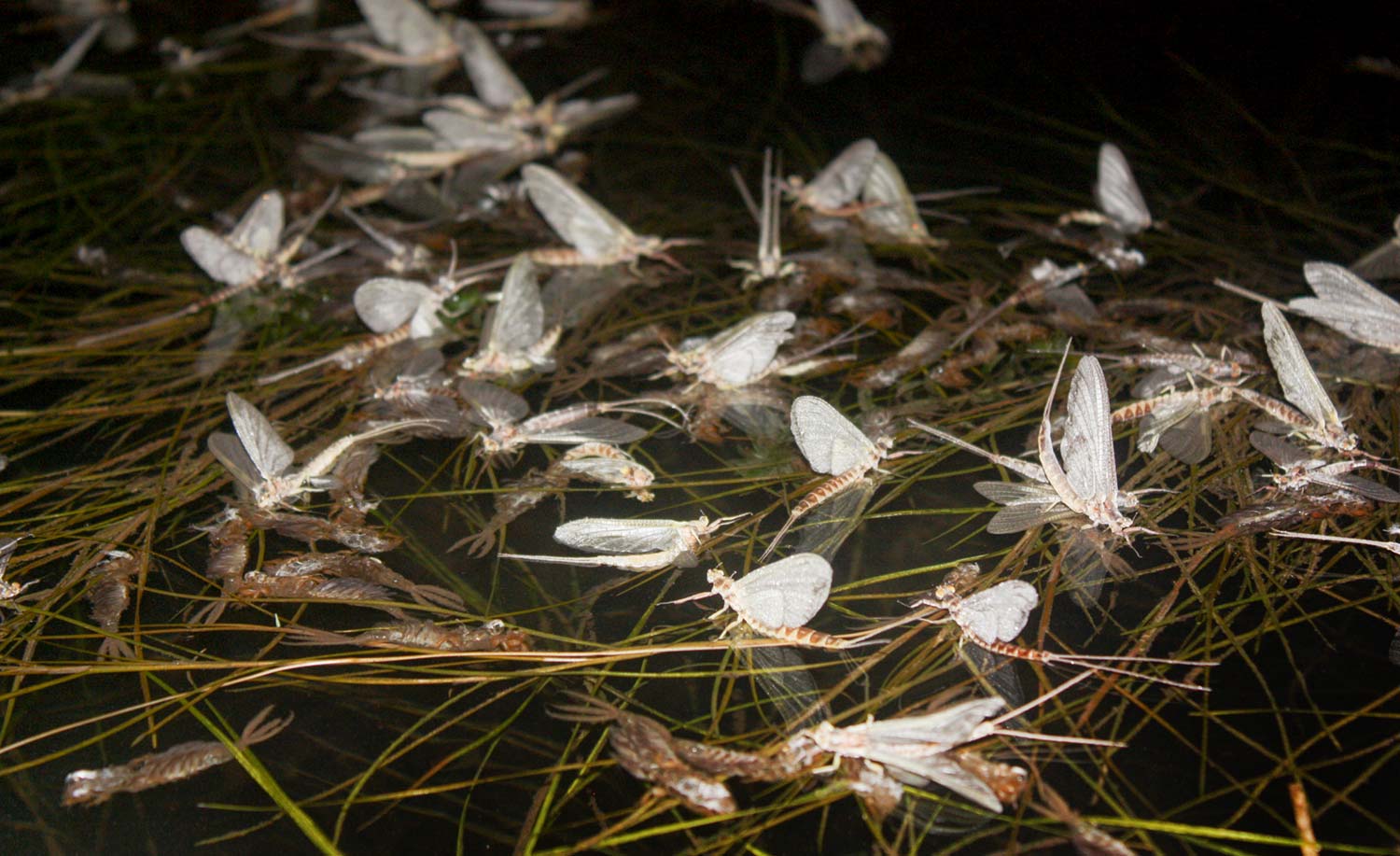
By Jason Tucker
I listened to a fishing podcast the other day in which both the hosts discussed the famous Hexagenia mayfly hatch.
Despite admitting that neither of them had ever fished the hatch, both opined that the Hex hatch was probably overrated. Yeah it has a reputation for big bugs, big hatches and big fish, but experiencing it must be akin to sighting a cougar east of the Mississippi.
IF YOU HAVEN’T EXPERIENCED A GOOD HEX HATCH ON A TROUT STREAM IN THE UPPER MIDWEST AND GREAT LAKES REGION, PERHAPS YOU’RE WONDERING IF IT REALLY LIVES UP TO THE HYPE. IS IT WORTH TRAVELING TO EXPERIENCE? SHOULD IT BE ON MY BUCKET LIST? IS IT MORE HYPE THAN REALITY? HOW DO I GET IN ON THE ACTION WITHOUT WASTING TIME AND MONEY?
I’m here to tell you that experiencing the Hexagenia limbata hatch is definitely worth it, and I’m going to give you the knowledge you need to be successful. It is worth seeing even if you don’t fish. It’s one of those rare experiences in which you experience animal numbers that are normally associated with the Serengeti or caribou in the Canadian tundra, or mass bird migrations. Just because they are insects makes it no less magical; in fact it is more so if you are a fly angler. There is a beauty and grace to the bugs themselves, and watching a river of bugs flying upstream to mate, or a swarm so dense you can’t see through it, or their dance over the water as the females fly upward and the males pursue is all magical in itself, a privilege for anyone to witness.
Hexagenia limbata mayflies occur across North America and I’ve experienced them everywhere from Labrador to Ontario to Washington State (where we got in on a stellar lake hatch) to the Deep South where I live, but the best place to fish this hatch is probably Northern Michigan. Wisconsin, Pennsylvania and New York (and I’m sure other Northeast states) all get hatches, but no place, not even Michigan’s Upper Peninsula, has a reputation for the Hex hatch like Northern Michigan, starting with Lake Michigan tributaries running up the west side of the state, up to its zenith on the Au Sable and Manistee rivers, and north to the tip of the mitt as we call it.
The first thing you need to know about Hex mayflies and brown drakes is that they’re more of a lake dwelling insect than a stream dwelling insect.
The most massive hatches occur on lakes like Lake St. Clair, Lake Erie and even the Mississippi river, all of which throw off such dense clouds of mating insects each season that they show up on weather radar. Around Lake St. Clair I’ve seen “drifts” of them piled up a couple feet deep smelling like rotten fish. They pile up so deep under street lights that they cause auto accidents because they make the roads slick. Unlike much of Wisconsin, or Michigan’s UP, which have limestone, sand or granite bedrock, Northern Michigan is glacial moraine, a giant pile of gravel, sand, clay and marl left by Ice Age glaciers. Hex and brown drake mayfly nymphs are burrowing insects that require muck and marl to burrow in. The bottoms and margins of the inland and Great lakes in this area are the perfect habitat. Trout streams with a
Read More »